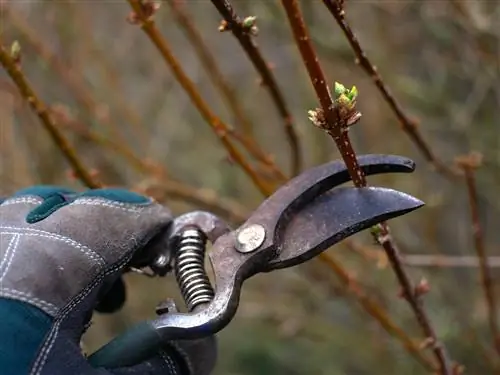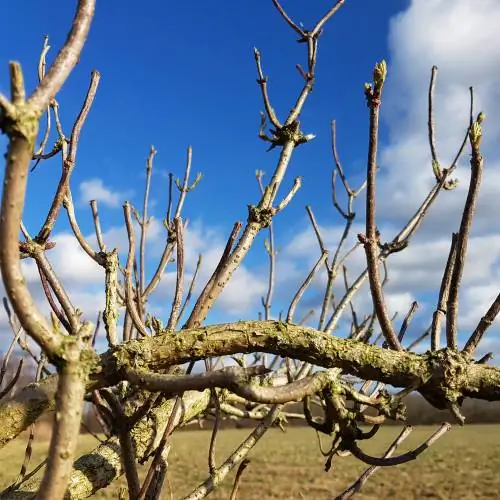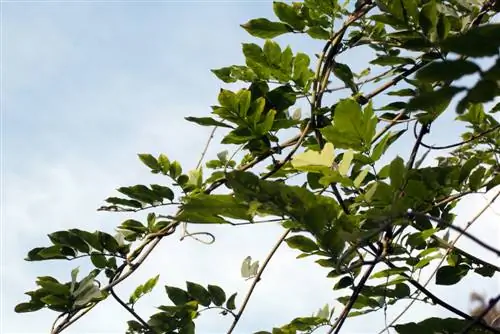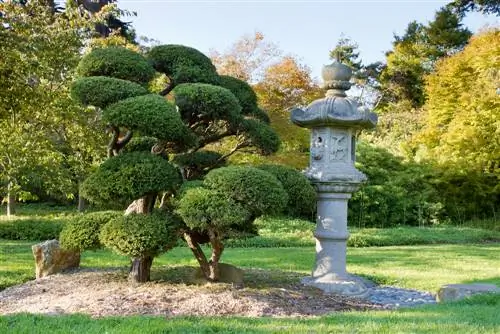- Author admin [email protected].
- Public 2023-12-16 16:46.
- Last modified 2025-01-23 11:22.
In order for forsythia to set many buds and bloom reliably every spring, they must be cut back regularly. However, gardeners can do a lot of things wrong when cutting. In this guide we explain what effects an improperly carried out cut has?

What happens if the forsythia is cut incorrectly?
with the buds. The result is that the following year the bushesnotor only sparselybloom.
When and how should forsythia be cut correctly?
Unlike many other trees, you should always cut back forsythia in spring,after flowering,.
- Selectively shorten the branches that have already faded to a strong bud or a young shoot.
- Then you can trim the bushes into shape.
Pruning in autumn should only be done if it is unavoidable.
What happens if you do the wrong rejuvenation cut?
Even then the hoped-forabundance of flowers will not materialize,because the shrub initially puts all its strength into the formation of new shoots with plenty of greenery.
Therefore, proceed as follows for the rejuvenation cut:
- When all the flowers have faded, remove the branches that have become rotten.
- Cut these a few centimeters above the ground.
- Narrow the crown by shortening overhanging branches down to a shoot that grows upwards.
Can an incorrectly cut forsythia die?
In principle, this is possible, butthe bushes usually recover wellfrom extensive pruning measures. Forsythias are very robust and will sprout again even if they have been put back to the cane.
Tip
Dwarf forsythia rarely need to be cut
Slow-growing forsythia varieties, which only grow about one meter high, form extremely short shoot sections between the buds and therefore do not tend to grow sprawling with overhanging branches. In order to preserve the ability of these shrubs to bloom, they should be shortened and shaped slightly after flowering.






